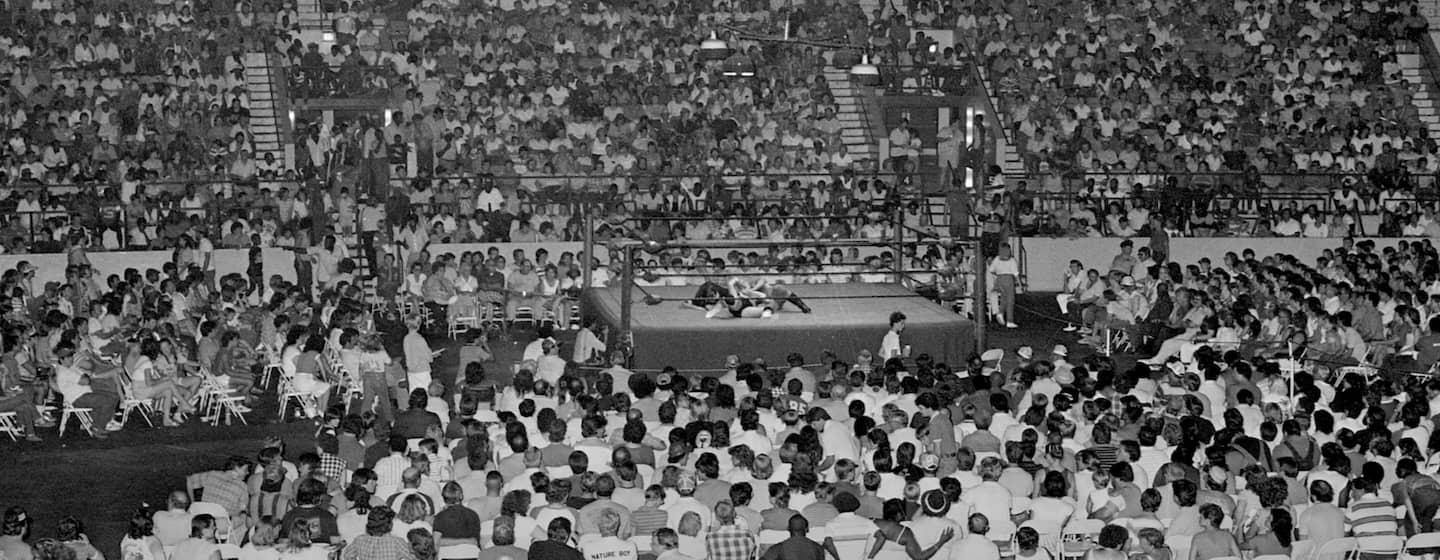For Professional Wrestling Fans, Dorton Arena’s Legacy is Personal and Powerful


For Al Lea and his family, going to Dorton Arena was a big trip. Al, just seven or eight at the time, his father, and his uncle would leave their farm in Caswell County, North Carolina and make the seventy-plus mile drive to see one of the weekly wrestling shows in the iconic building. It was a chance to cheer their heroes and jeer at the villains they saw on television every week, to take part in the atmosphere – and on a few occasions when things spilled outside of the ring, even the action – themselves.
But for a Black family in the 1970s, it was also a chance at a kind of community they didn’t find most places – a cross-cultural melting pot of friends and fans gathered under the same roof.
“It was a microcosm of life,” Al says, remembering the mix of faces, ages, and backgrounds that filled the Dorton stands. Photos from the time match the memories, revealing a crowd so diverse it almost looks cast. Farmers in jeans sitting side-by-side with businessmen in suits. Women standing and shouting louder than their kids. One (likely apocryphal) story recounts a particular North Carolina governor sitting on the front row and being pelted with popcorn from behind – until his security detail put an end to it. There were no class walls, no premium seating, no VIP boxes.
Newspaper clippings put wrestling shows in Dorton Arena as early as 1963 – just eleven years after the landmark building first opened on the North Carolina State Fairgrounds. Designed by Polish architect Matthew Nowicki, the cutting-edge structure received worldwide acclaim as an architectural marvel and an image of post-war progress. By the ‘60s, the building was a destination for major concert acts, including Ray Charles, Johnny Cash, and The Temptations.
But for Al and so many others, professional wrestling defines the building’s legacy. Wrestling was an equalizer, a shared experience everyone could relate to as they watched an underdog good guy – a “babyface,” in pro-wrestling terms – fight against and, most often, conquer, the villainous “heel.” A simple morality play each fan could map onto their own lives.
“In the African American community, we saw ourselves in that struggle,” Al says.
Mention Dorton Arena to wrestling fans of a certain age and they will regale you with memories of hot nights under the rollercoaster roof, watching good versus evil play out in front of packed houses of screaming fans. People remember the stars, the excitement, the matches, the moments. They recall the smell of popcorn and laugh about Dorton’s lack of air conditioning (a luxury missing to this day).
The wrestling is remembered fondly, but when you listen, closely you find what was happening in the stands was often more important than what went on in the ring. Parents bonded with their kids. Friendships were made. Through wrestling, Dorton Arena inspired connections and communities as memorable and lasting as the building itself.
It’s a feeling Al Lea recalls as vividly as any great match he ever saw. “Sitting in that crowd,” he says, “all were one.”
Follow the rise and fall of pro wrestling at Raleigh’s iconic Dorton Arena, premiering Thursday, 8/8 on PBS NC & the PBS App.
STREAM ANYTIME, ANYWHERE
